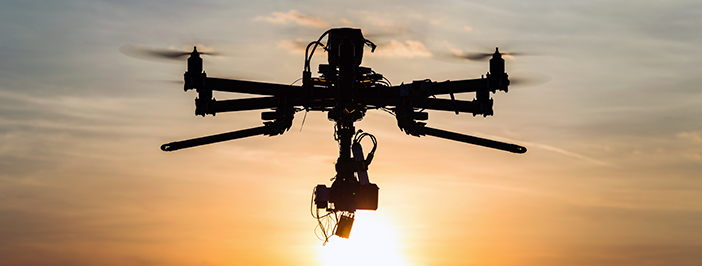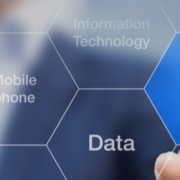4 Security Risks Imposed by Drones
The market for drones – unmanned aerial vehicles (UAVs) – is expected to continue growing dramatically over the next five years. Government and private business are finding them of value in such areas as agriculture, energy, retail, mining, real estate, construction, news media, and many more. More than just eyes in the sky, drones are being used to collect new data for complex analytics. This is one benefit of drone technology that organizations are just beginning to appreciate, but drone use also brings a downside. There are more nefarious purposes and security risks in collecting data via drones, causing many security researchers to grow concerned about the popular use of such devices. We have compiled four drone-related risks that are particularly worrying.
Big Data
The Air Force uses drones bearing an array of advanced cameras such as wide-area surveillance systems. They capture hundreds of hours of video per day, each of which can consume 8 GB of storage. There is currently no software that can aggregate and analyze such huge amounts of data efficiently, resulting in a rapidly growing archive of potentially vital data. The challenge is countering the security risks that come with storing and sharing massive amounts of data on a continuous basis. There is also the problem of doing daily backups of the files generated by wide-scale surveillance, which have to be preserved until analyzed, as a loss of video footage covering crucial moments could bring about several complications.
Hacking
Ranked high among the host of drone-related security risks is the vulnerability of the data that drones capture. Surveillance drones monitoring the US-Mexico border are being hacked by drug traffickers looking for the safest routes. The challenge for tech companies is developing systems that can detect and deter unauthorized access, including the ability to override drones in the event that they are physically compromised.
Sensitive Data
The concept of individual privacy still has yet to be resolved. Drones may be required to fly at 400 feet or avoid crossing property lines, but given the state of digital camera technology, this regulation is hardly preventative in most cases. The real question is what’s done with the video afterward and what rights are being violated if no laws are broken. Sharing video, or merely the threat of doing so, can lead to humiliation, extortion, and litigation. These are problems for the courts to settle, but in the meantime, there are no reliable means of analyzing and flagging the accidental or malicious capture of questionable content.
Criminal Activity
Drones are being used to smuggle contraband into prisons, as well as evaluate the security measures and operations of potential targets for robbery or terrorist acts. Drones with hi-def cameras can be purchased online for under $50, making them a viable outlet for any criminal intentions. The ever-growing problem is coming up with security systems that can identify and deter such intrusions.
As drones have an increasing impact on corporate data and policies, enterprises must address these issues while following what will be evolving regulations regarding drone use. Drones may require different network hardware and bandwidths for data streaming, as well as various strategies for analyzing, storing, and sharing a growing archive of video.
To learn more interesting news and the IT solutions we have to offer here at PRO OnCall, contact us today for a free consultation! We’d love to meet with you.





